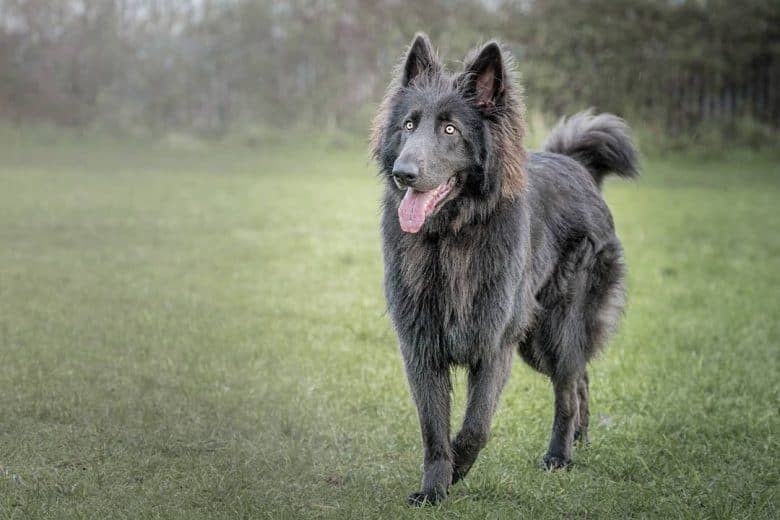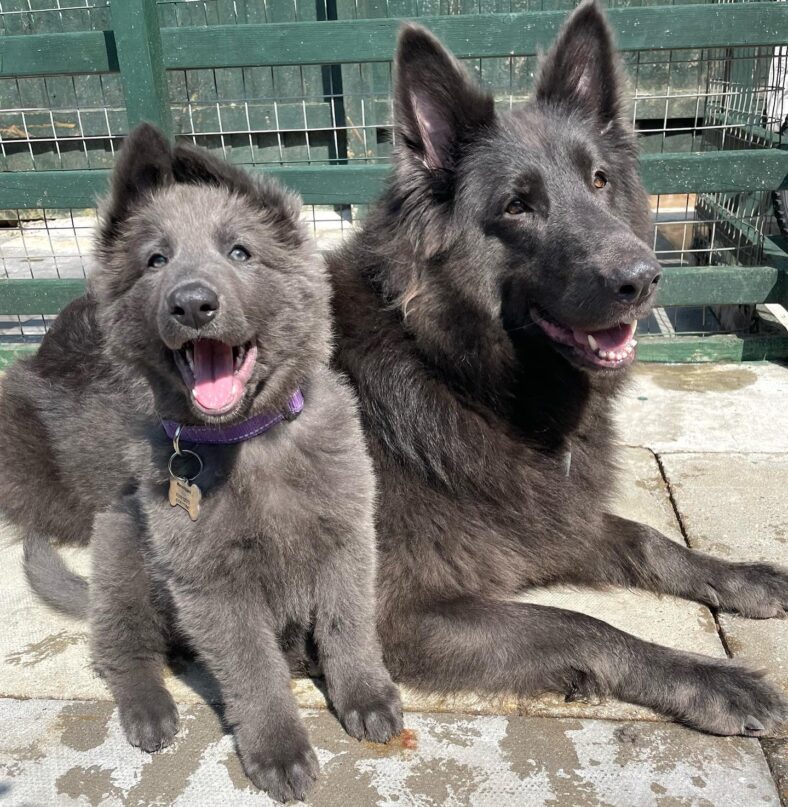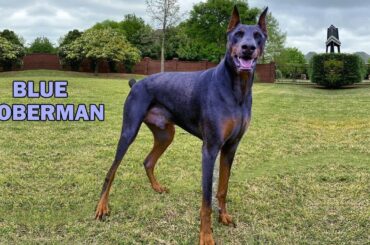Table of Contents
Understanding the Fascinating World of Blue German Shepherd
The German Shepherd stands as an iconic symbol of intelligence, loyalty, and versatility. However, within this esteemed lineage, a variant emerges with a distinct and captivating allure, the Blue German Shepherd. With its striking coat that ranges from a captivating steel blue to a deep slate hue, this particular breed commands attention and piques curiosity.

This article embarks on a journey into the world of Blue German Shepherd, delving into the unique characteristics that set them apart from their more common counterparts. From the origins of their distinctive coloration to the temperament that accompanies their striking appearance, we unravel the mysteries and magnificence surrounding these regal canines.
History of the Blue German Shepherd
Though their original purpose in breeding was herding, German Shepherds have proven to be excellent working dogs over the years, serving as guide dogs, search and rescue dogs, watchdogs, guard dogs, police, military, and even as companion dogs!
The German Shepherd comes in a variety of color varieties. One of the rarest varieties is the Blue German Shepherd, and its exact origins are unknown.
The American Kennel Club (AKC) recognizes German Shepherds, however the Blue German Shepherd is considered a major flaw. The German Shepherd with a liver hue is the same in this regard.
The blue coloring of the Shepherd doesn’t modify its traits, so there is a lot of debate in the GSD community over whether or not the AKC should recognize them. Conversely, some claim that the blue is the result of a gene mutation and that over time, it ought to have been bred out.

Genetics Behind the Blue Coat
The fading gray tint is referred to as the blue coloration in Blue German Shepherd. This gene, also referred to as the dilution gene (d), is in charge of turning the dog’s coat from black pigment to a blue-gray hue. Other breeds like the Pittie and Blue Frenchie are also caused by this gene.
Because the dilution gene is inherited in an autosomal recessive fashion, it cannot manifest in an offspring unless both parents contain the gene. A puppy born to two dilution gene carriers has a 25% chance of inheriting two copies of the gene, giving them a blue coat.
While the blue coloring is distinctive and striking, it is crucial to remember that throughout breeding, health must come first. The dog’s abilities as a companion or working animal are unaffected by its blue coloring.
Rarity of the Blue German Shepherd
The Blue German Shepherd is undoubtedly eye-catching, but its uniqueness just heightens its appeal. Due to a recessive trait, the blue coat is far less common than the conventional German Shepherd coat colors, which include black and tan, sable, and solid black.
Because blue coat inheritance is uncommon, breeders that focus on this color variation typically have fewer puppies available, which makes them extremely sought after by aficionados. Though rare, it’s crucial to keep in mind that these eye-catching canines still need the same care, socialization, and training as regular German Shepherds. Their rarity should never be an excuse for ignoring their basic requirements as observant, devoted, and intellectual friends.

Blue Color Variations
Even if the Blue German Shepherd is already a unique and alluring variation, it’s vital to remember that blue can appear in a variety of patterns and tints. A deeper, steel-blue coat may be seen on some Blue German Shepherds, while others may have a lighter, nearly silver-blue coat. Part of the enchantment of this breed is its amazing range of blue tones.
Furthermore, blue can be seen in a variety of patterns, such as solid blue, blue sable, or even blue and tan. In the realm of dog coat colors, the Blue German Shepherd stands out due to the distinctiveness and diversity of each of these patterns.
Physical Characteristics of Blue German Shepherd
- Blue German Shepherd is a large dog breed, and they can grow quite tall. Males typically stand between 22 and 26 inches tall at the shoulder, while females are usually between 22 and 24 inches tall. In terms of weight, they typically weigh between 50 and 90 pounds.
- The coat of a Blue German Shepherd is typically thick and dense, with a medium length. The fur is usually straight and lies close to the body, which helps to protect the dog from the elements.
- They have a wedge-shaped head and a long, proportional muzzle. Their ears are erect, and the eyes can vary in color, but they are usually light blue or gray. German Shepherds are known for their efficient and smooth gait, allowing them to cover ground gracefully.
Temperament and Behavior
Blue German Shepherd are renowned for their protective, intelligent, and devoted personalities. These are self-assured canines that genuinely want to please their owners. They also do quite well in obedience and agility events and are very trainable. GSDs are the best police dogs because of their clever but obedient disposition.
When it comes to behavior, Blue German Shepherd are usually composed and peaceful. They don’t have a reputation for being violent until they sense danger to themselves or their family. They are great security dogs and will stop at nothing to keep their home and family safe.
Additionally, Blue German Shepherd are gregarious dogs. They like socializing with humans and other dogs. They are wonderful family pets and get along well with kids. They can also adapt well to a variety of living environments, including big houses and small apartments.

Training a Blue German Shepherd
After Poodles and Border Collies, German Shepherds rank third among the smartest canines. They are compared to a 3-year-old and are believed to be as intelligent, according to our notion of human intelligence. They make excellent working and pet dogs since they are also calmer than intelligent canines like Malinois and Border Collies.
A Blue German Shepherd requires crate training, socialization, and obedience. To reward good conduct, use toys, praise, and other forms of positive reinforcement. It’s important to maintain consistency, so make sure the family employs the same rules and incentives.
Maintaining Health and Nutrition for Blue German Shepherd
The blue variant of the German Shepherd needs a balanced diet and adequate nutrition to stay healthy, just like all other German Shepherds. To maintain your dog’s general health, provide them high-quality food that is specifically made for their size, age, and activity level. For specific advice, always see your veterinarian. You should also keep an eye on your dog’s weight to avoid obesity, which can result in a number of health problems.
The same health issues that affect ordinary German Shepherds also affect Blue German Shepherd such as bloat, degenerative myelopathy, and hip and elbow dysplasia. A good diet, regular exercise, and veterinarian examinations can all reduce your dog’s risk of developing certain illnesses and prolong their happy, healthy life.

Grooming Your Blue German Shepherd
Taking care of a Blue German Shepherd is comparable to taking care of any other German Shepherd. These dogs have two coats: an outer coat that serves as protection and a dense, insulating undercoat. Brushing is essential to prevent shedding and remove loose hair, ideally two to three times a week. To keep your house hair-free and your dog comfortable during shedding seasons, you might need to brush your dog every day.
To avoid infections and maintain general hygiene, normal grooming should also involve frequent nail cutting, teeth cleaning, and ear cleaning in addition to brushing. You may maintain the greatest possible appearance and well-being in your Blue German Shepherd by creating a regular grooming regimen.
Impact of Blue Color on Health
German Shepherds’ blue coat color is the product of a recessive gene; it has no inherent effect on the health of the dog. When it comes to temperament and physical prowess, Blue German Shepherd are just as healthy and competent as their traditionally colored counterparts.
But it’s crucial to pick a respectable breeder who puts their dogs’ health before coat color. In order to reduce the possibility of hereditary health problems in their puppies, trustworthy breeders will make sure that their breeding canines go through the required examinations and tests. The blue hue shouldn’t have an adverse effect on your Blue German Shepherd’s health or well-being if you select a reputable breeder.
READ ALSO
- Unveiling the Diversity of Livestock Guardian Dog Breeds: Exploring 5 Exclusive Loyal Companions in Agriculture
- A Comprehensive Guide to the Griffon Nivernais Breed: 5 Awesome Characteristics, History and Training
- Bullmastiff Brindle: The Unique World of Bullmastiff Brindle Breed
- Fluffy French Bulldog Breed Information, History, 6 Comprehensive Body Characteristics, Behavior And Caring
FAQs
How rare is a blue German Shepherd?
German Shepherds come in more than 10 color variations including the classic black and tan, solid black, liver, black and silver, black and red, and white. Blue German Shepherds are also a standard coloration but are considered relatively uncommon.
Which color German Shepherd is best?
Alongside black and tan, the black and red combination is preferred over others by German Shepherd breeders. As black and red are both produced by dominant genes, this color combination is easier to breed for, and many breeders focus on producing purebred dogs with deep red coloring.
Do blue German Shepherds exist?
Yup. A blue German Shepherd is a GSD with a double recessive D (dilute) gene, which results in a diluted black color, making the dog’s coat appear visibly blue. They are not a separate breed – but paler variants of black GSDs and have just the same temperament and health as other varieties.





10 Comments
Blue German Shepherds are absolutely stunning! Their unique coat color sets them apart from the traditional tan and black Shepherds
I had the pleasure of meeting a Blue German Shepherd recently, and I was blown away by their striking appearance. Such a beautiful shade of blue!
The Blue German Shepherd’s coat color is as mesmerizing as their intelligence and loyalty. They truly are a remarkable breed.
I’ve always been a fan of German Shepherds, but the Blue variation adds an extra layer of allure. They’re like rare gems among dogs.
Blue German Shepherds have such a regal presence. You can’t help but be drawn to their majestic demeanor
I’ve heard that Blue German Shepherds are not only gorgeous but also incredibly versatile. They excel in everything from obedience to agility and even therapy work.
The bond between a Blue German Shepherd and their owner must be incredibly strong. They’re known for their unwavering loyalty and devotion.
One look at a Blue German Shepherd, and you can see their intelligence shining through. They’re quick learners and thrive on mental stimulation.
I admire the athleticism of Blue German Shepherds. They have endless energy and love nothing more than being active and exploring the great outdoors
If you’re considering adding a Blue German Shepherd to your family, you won’t be disappointed